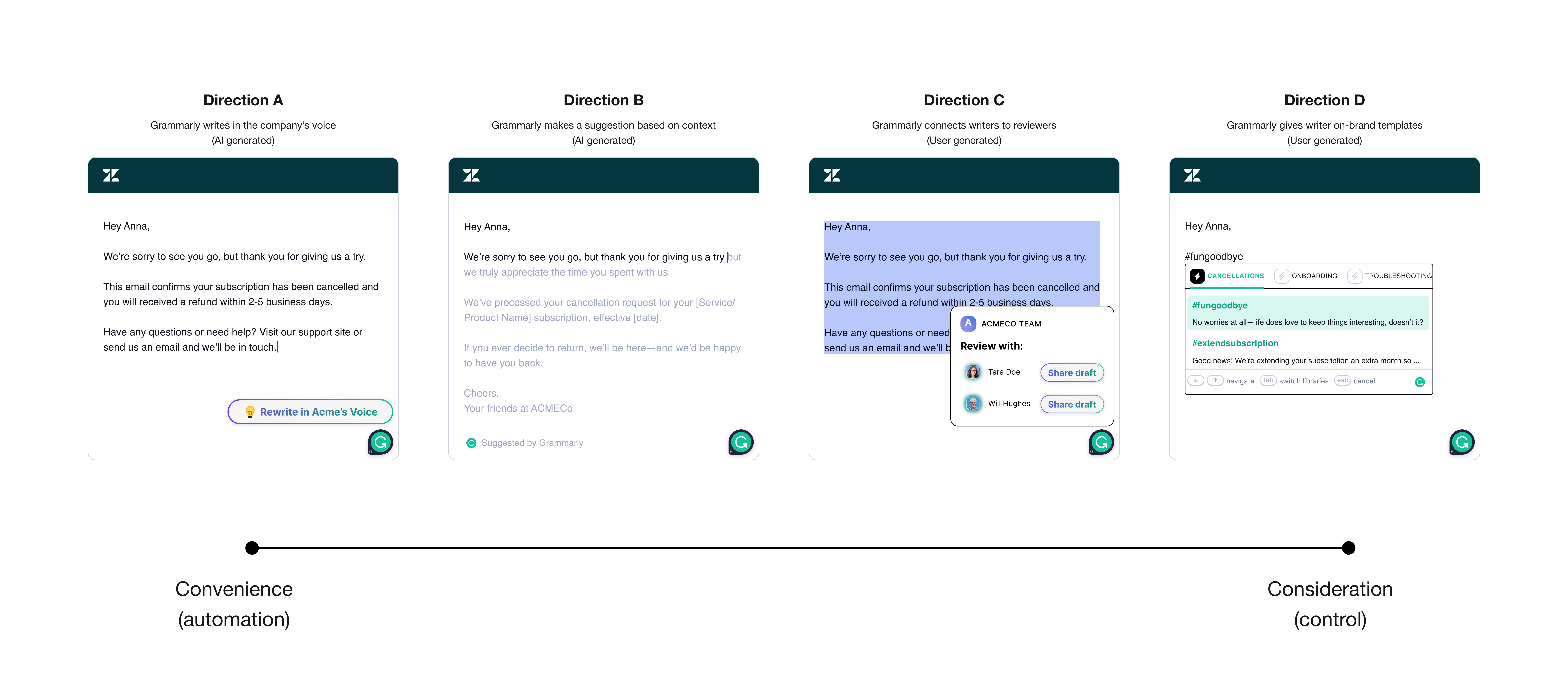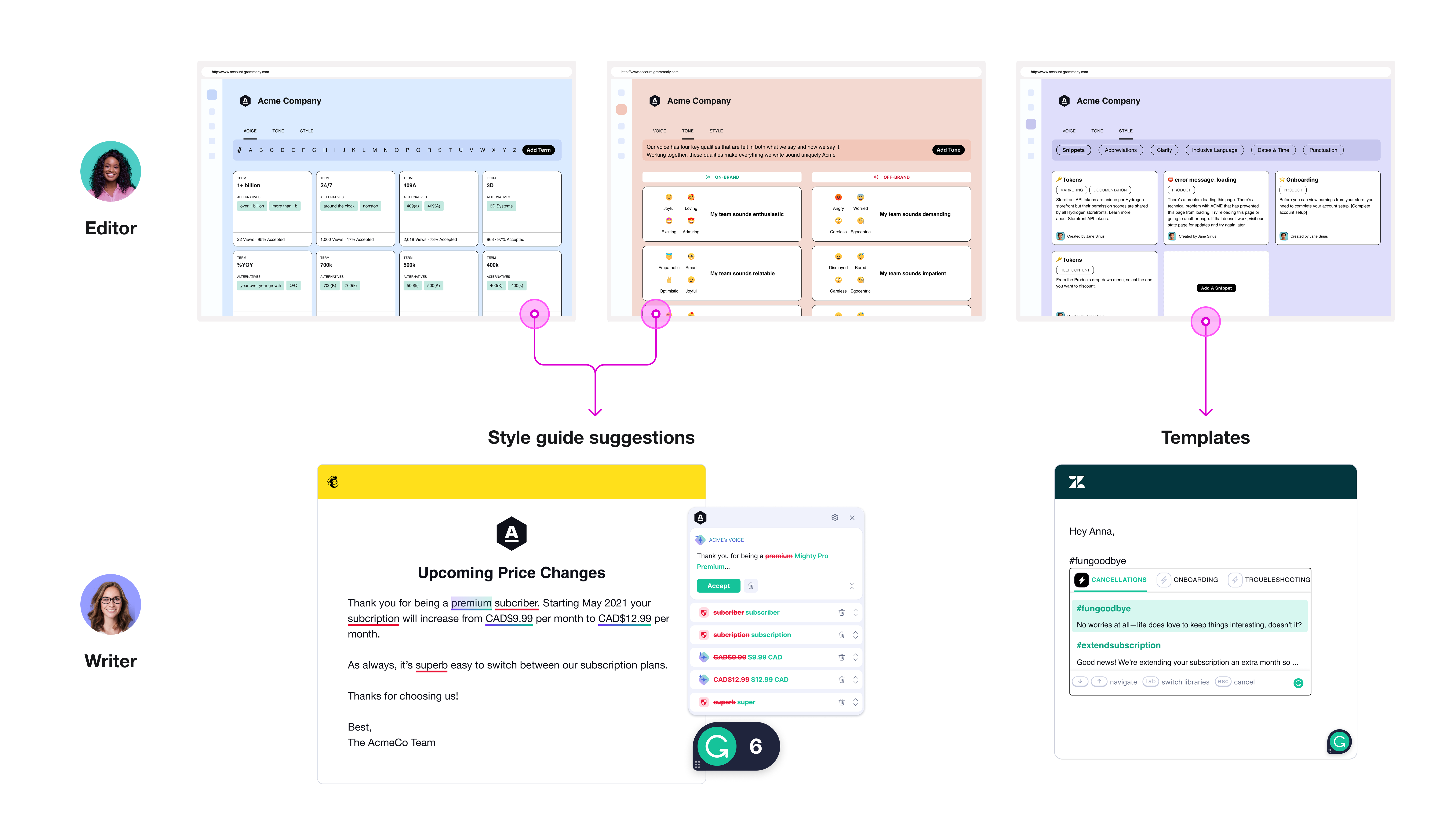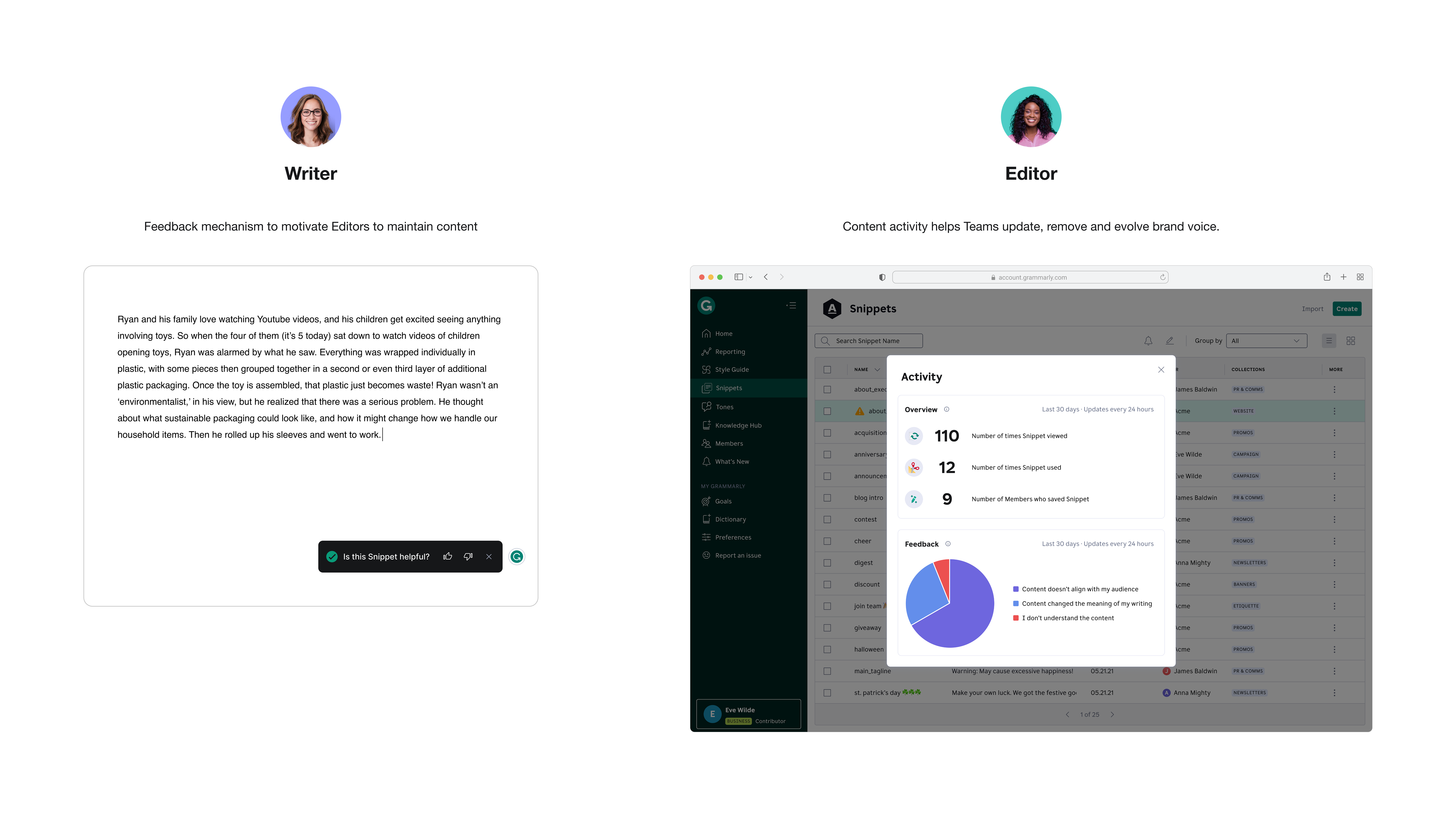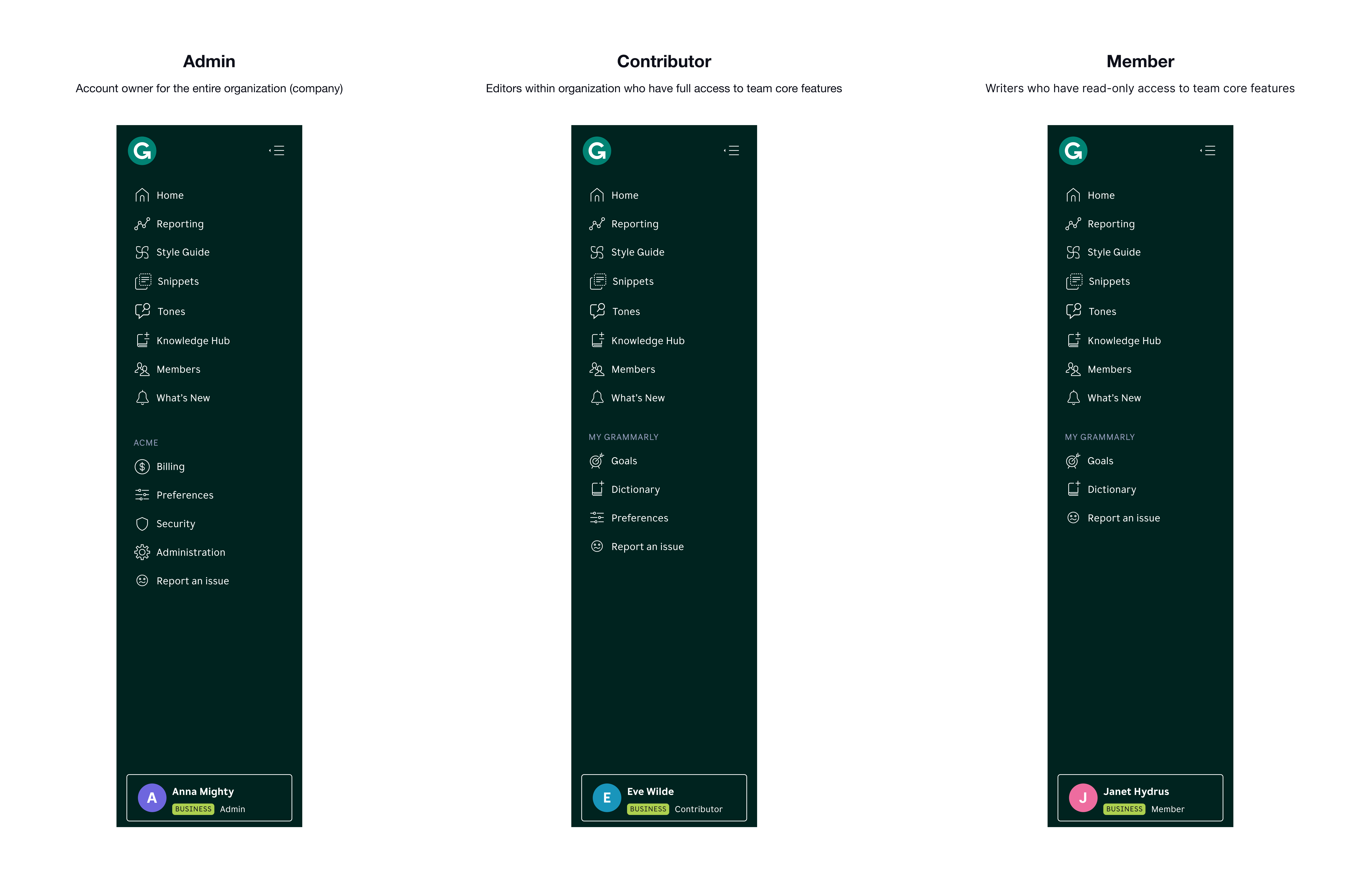Rocío Del Carmen

Grammarly has been the leading writing assistant for millions of students worldwide for 10+ years. To continue deepening the relationship with students as they transition into their professional careers, Grammarly sought to create new offerings.
During discovery, I led research to define our target segment, their needs, pain points and identify new revenue streams. I partnered closely with Product Management to define product market fit traction for new business offerings. When I transitioned to delivery, I spec out designs for MVPs before bringing other product designers to help me expand workflows.
I’m proud that the new Grammarly communication assistant for business was welcomed as an essential investment for teams at Expedia, Klarna, Netflix and Zoom.
I partnered with Customers Insights and Product to uncover exciting new market opportunities for Grammarly beyond Students across professionals, institutions (universities and government agencies) and companies.
Through an iterative approach, I narrowed our focus to companies. Companies showed promising growth in terms of number of potential users and willingness to pay for writing support.
To learn more about writing needs and opportunities within companies, I zoomed into verticals who do high volume communication (Support & Marketing teams). I discovered people fell into two types of roles: the Word Smither and/or the Editor.
The Word Smither writes on behalf of the company and wants to minimize any reputation risks to their company. The Editor proofreads and reviews content for multiple teams to ensure the brand’s voice comes across all content. But the Editor is often spread too thin😫
Using Grammarly’s ubiquity superpower, I focused on delivering a solution that helps:
To ensure successful adoption within companies, I tested several options across a spectrum from AI to user generated content support for Word Smithers.
Direction A, a writing assistant that helps Word Smithers rewrite text in the brand’s voice offered a unique value proposition with potential to expand into multiple verticals. But potential customers were hesitant to have their teams fully rely on AI generated content (pre chat GPT era🤔). Also at the time of this initiative our team did not have enough ML partners to execute on this vision.

As a next best alternative, I proposed to first focus on user generated content. This approach would helped Grammarly learn a company’s voice and gain their trust to eventually deliver AI generated content.

To support writers anytime anywhere, I broke away from the Grammarly writing assistant. I observed that writers who do high volume communication value efficiency so I aimed to keep them as much as possible closer to their writing.
I prioritized search first since our target segment was familiar with keyboard shortcuts for getting templates. As we expanded to support other verticals (marketing/sales) and content grew, I added a browsing experience for writers to find content via categories.
However for the third milestone, for writers to get Grammarly’s full generative AI support, they were brought back to the core Grammarly assistant due to resource constraints by the war in Ukraine.
I saw an opportunity for Grammarly to make content management for Editors a unified and effortless experience than existing solutions. With Grammarly Editors had 3 options:
Option 3 increased time to value for companies that only had less than 10 Editors and accelerated content creation so teams had quality content to use during the trial period with Grammarly.

I also prioritized giving Editors visibility on performance to add value and motivate them to make Grammarly their single source of truth for content. Editors often had to wait on an Engineer to pull metrics for them. With Grammarly, they got insights easily on content and were able to maintain content more often.

I created 3 onboarding flows to support adoption and time to value for all teams within the company.
I broke down set up tasks for Editors, previewed features visually and prompted them to invite other collaborators. During the installation process, I prioritize fun visuals to educate users on what Grammarly Business has to offer.
For the beta, I created a simple model for access and account management where an Admin, the Editor creates content and also manages the account, while Members, Word Smithers have a view only, to learn quickly.
But for GA, I added a new role: Owner. The account owner is responsible for managing the account’s billing, security and privacy while the Editor role only kept the scope of creating and managing content only.
With this change in roles, the product navigation also evolve to reflect the different views teams see when they go to their Grammarly account.
